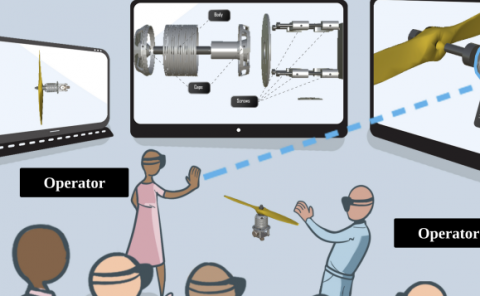Usability of Individualized Head-Related Transfer Functions in Virtual Reality: Empirical Study With Perceptual Attributes in Sagittal Plane Sound Localization
PubDate: Aug 2020
Teams: University of Vienna
Writers: Claudia Jenny ; Christoph Reuter

Abstract
Background: In order to present virtual sound sources via headphones spatially, head-related transfer functions (HRTFs) can be applied to audio signals. In this so-called binaural virtual acoustics, the spatial perception may be degraded if the HRTFs deviate from the true HRTFs of the listener.
Objective: In this study, participants wearing virtual reality (VR) headsets performed a listening test on the 3D audio perception of virtual audiovisual scenes, thus enabling us to investigate the necessity and influence of the individualization of HRTFs. Two hypotheses were investigated: first, general HRTFs lead to limitations of 3D audio perception in VR and second, the localization model for stationary localization errors is transferable to nonindividualized HRTFs in more complex environments such as VR.
Methods: For the evaluation, 39 subjects rated individualized and nonindividualized HRTFs in an audiovisual virtual scene on the basis of 5 perceptual qualities: localizability, front-back position, externalization, tone color, and realism. The VR listening experiment consisted of 2 tests: in the first test, subjects evaluated their own and the general HRTF from the Massachusetts Institute of Technology Knowles Electronics Manikin for Acoustic Research database and in the second test, their own and 2 other nonindividualized HRTFs from the Acoustics Research Institute HRTF database. For the experiment, 2 subject-specific, nonindividualized HRTFs with a minimal and maximal localization error deviation were selected according to the localization model in sagittal planes.
Results: With the Wilcoxon signed-rank test for the first test, analysis of variance for the second test, and a sample size of 78, the results were significant in all perceptual qualities, except for the front-back position between own and minimal deviant nonindividualized HRTF (P=.06).
Conclusions: Both hypotheses have been accepted. Sounds filtered by individualized HRTFs are considered easier to localize, easier to externalize, more natural in timbre, and thus more realistic compared to sounds filtered by nonindividualized HRTFs.



